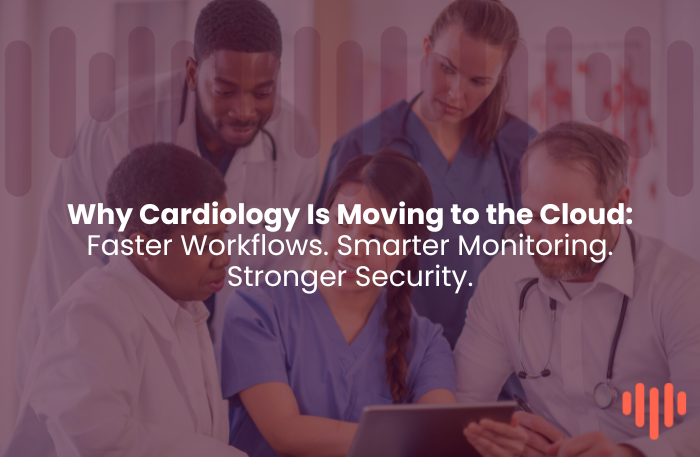Cardiac monitoring technology has come a long way in the last decade—but many clinics are still tethered to on-premise platforms that limit flexibility, increase overhead, and make it harder to scale. As cardiology groups face mounting pressure to reduce costs, improve access to care, and streamline workflows, cloud-based platforms are becoming the clear path forward.
In this post, we’ll explore why more cardiology practices are making the switch to cloud-based monitoring systems—and what you need to consider when evaluating your options.

1. Security and Compliance Are Now Built-In
Historically, concerns around data security made clinics wary of the cloud. But modern cloud platforms are now built with security at their core—offering features like:
- HIPAA-compliant data storage
- End-to-end encryption
- Multi-factor authentication
- Automated audit logs
For many clinics, cloud-based platforms now offer better security than their legacy on-premise systems.
2. Scalability Without the Headaches
Adding users or devices to an on-premise platform often requires IT support, hardware upgrades, or complex licensing. In contrast, cloud platforms are built to scale—so growing your practice or expanding to multiple sites doesn’t mean adding infrastructure.
Whether you monitor 500 or 5,000 patients, a cloud-based solution can support your growth with:
- Unlimited user access
- Remote login for hybrid teams
- Easy onboarding for new staff
3. Faster Workflows and Fewer Bottlenecks
One of the biggest advantages of cloud-based monitoring is the ability to streamline daily operations. With integrated scheduling, smart interpretations, and customizable reporting tools, clinics can reduce delays in provider review, improve billing workflows, and spend less time manually chasing down data.
4. Built for Collaboration and Visibility
Cloud-based platforms make it easier for teams to stay aligned—whether they’re in the same office or working remotely. Look for features like:
- Real-time task management
- Role-based permissions
- Centralized communication logs
- Device performance analytics
These features aren’t just convenient—they’re critical for improving patient outcomes and maximizing reimbursement.
5. Preparing Your Practice for the Switch
Switching from an on-premise to a cloud platform doesn’t have to be disruptive. Look for vendors that offer:
- Dedicated migration support
- Training for all user types
- Custom workflow configuration
- Integration with your EHR
Change can be daunting—but staying on outdated systems can be riskier in the long run.
Conclusion
Cloud-based cardiac monitoring isn’t just a trend—it’s becoming the new standard. As cardiology practices navigate increasing demands on care delivery, staffing, and reimbursement, the cloud offers a secure, scalable, and smarter way to manage remote monitoring.